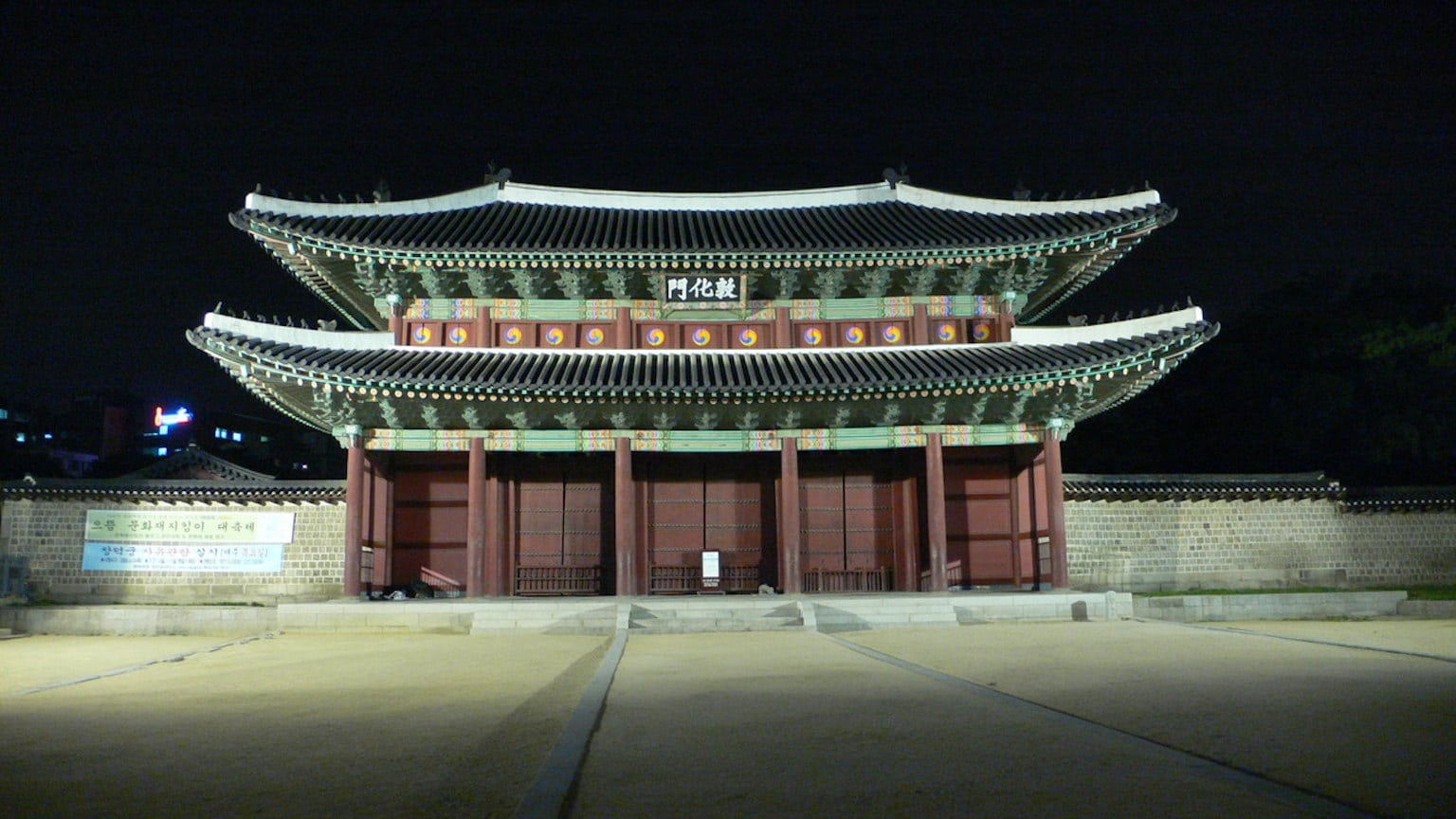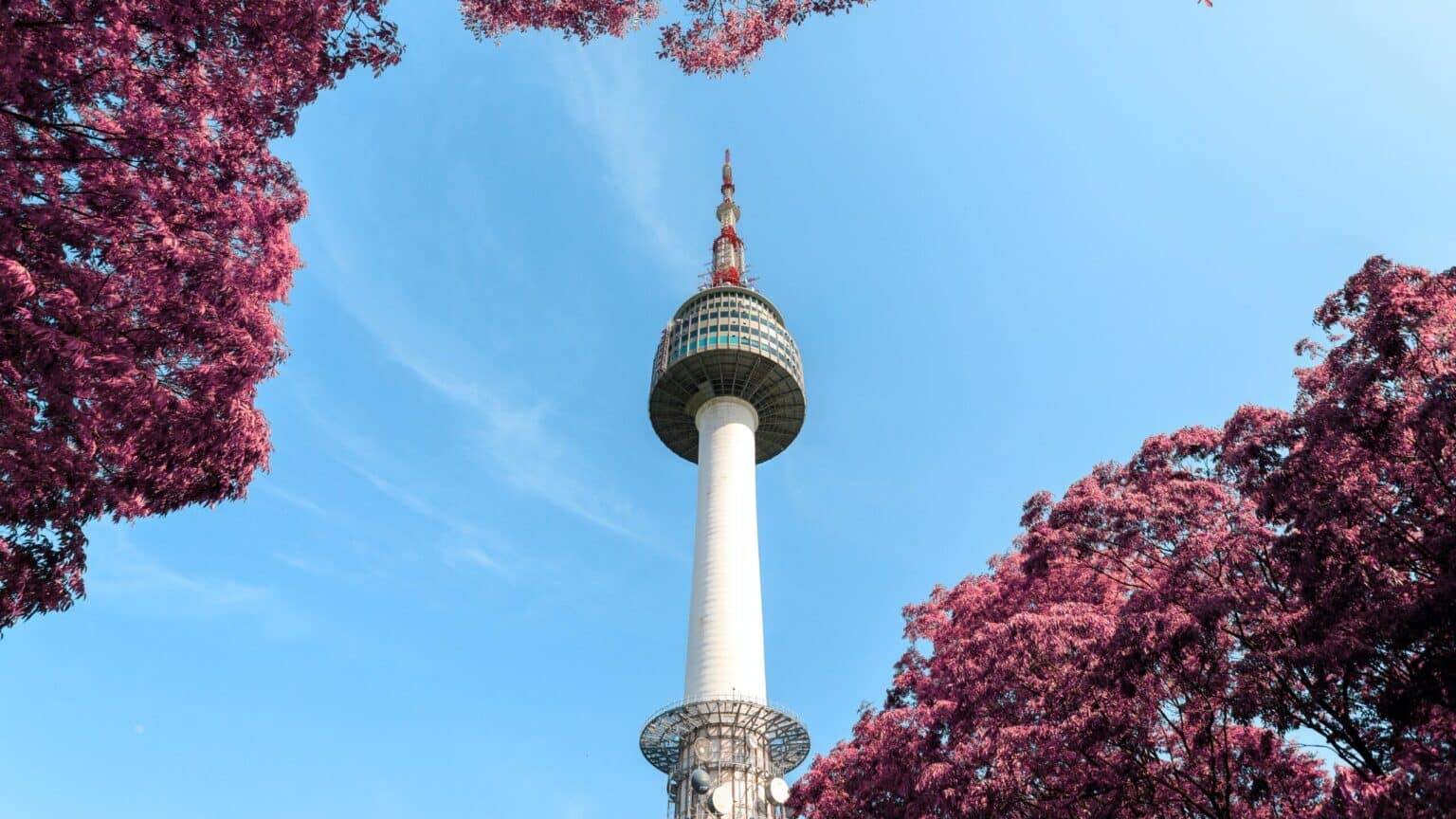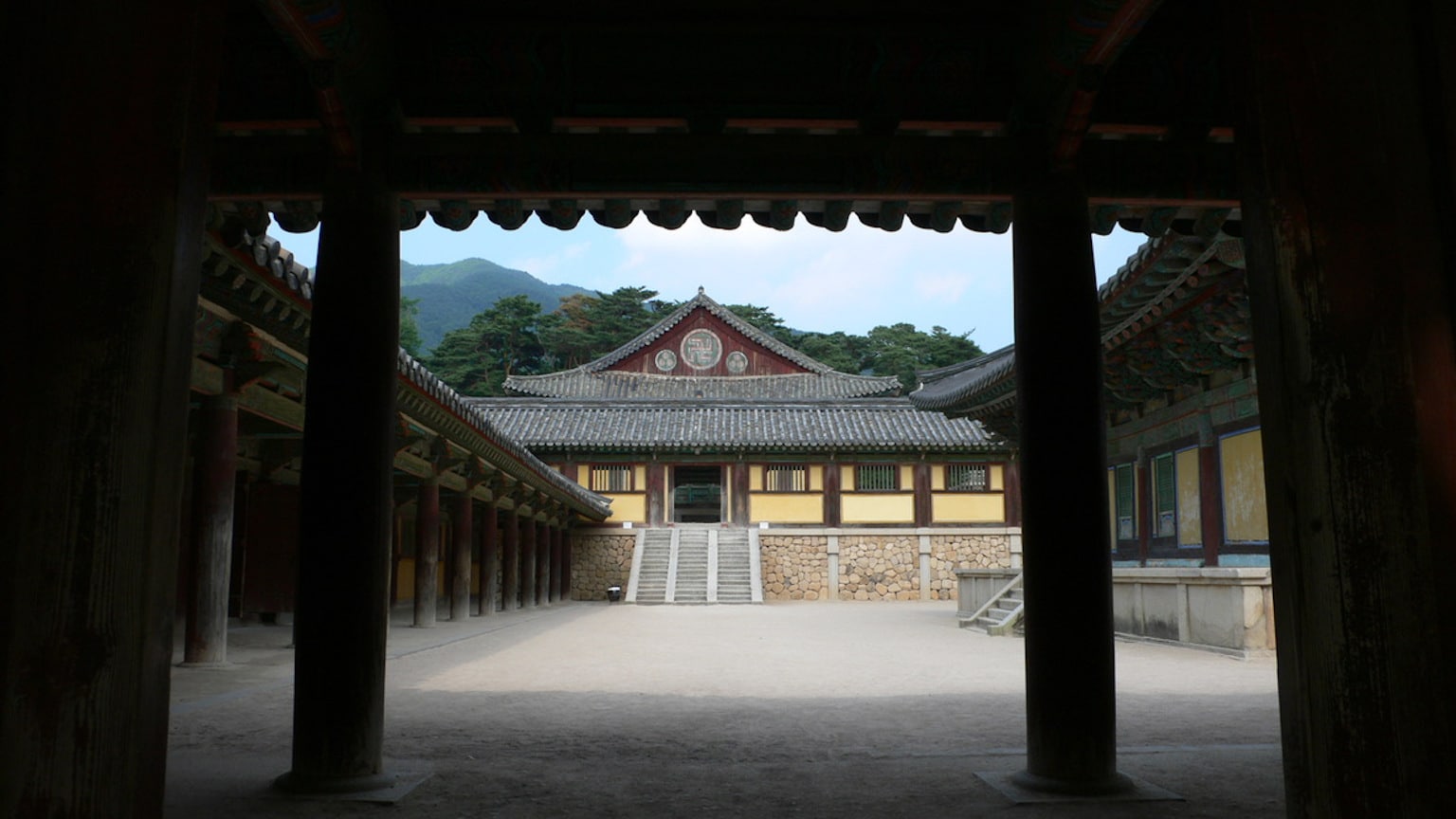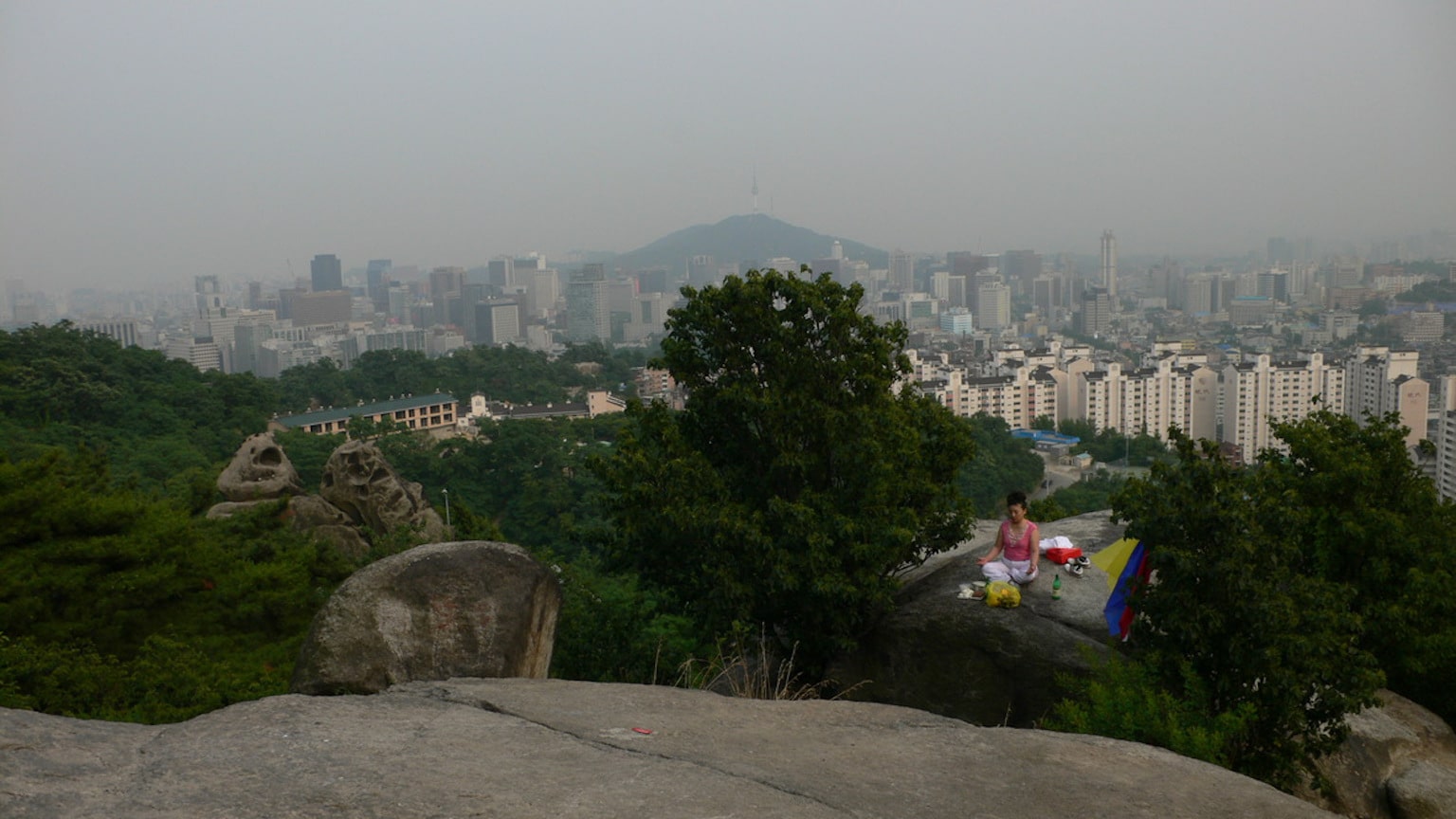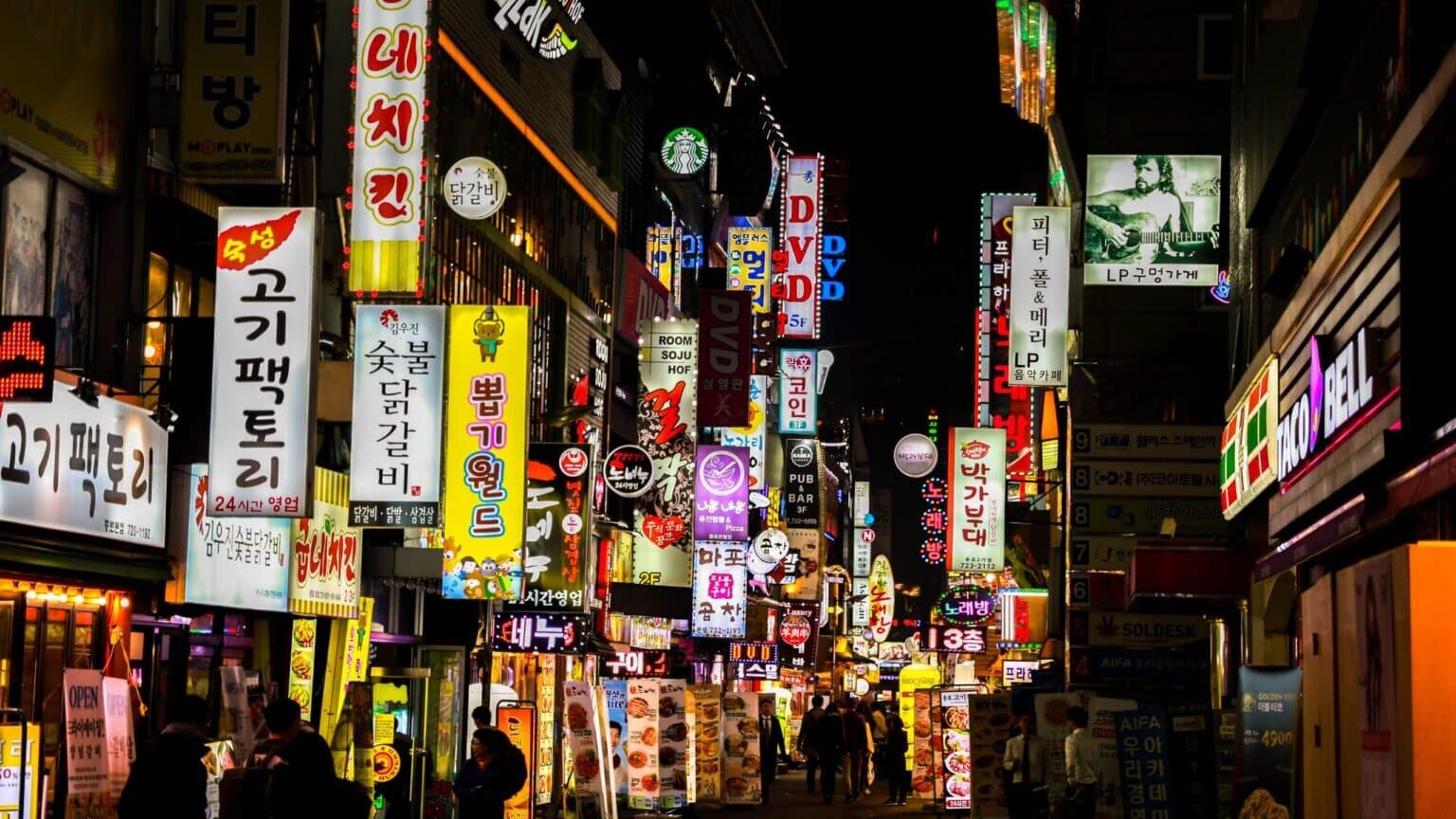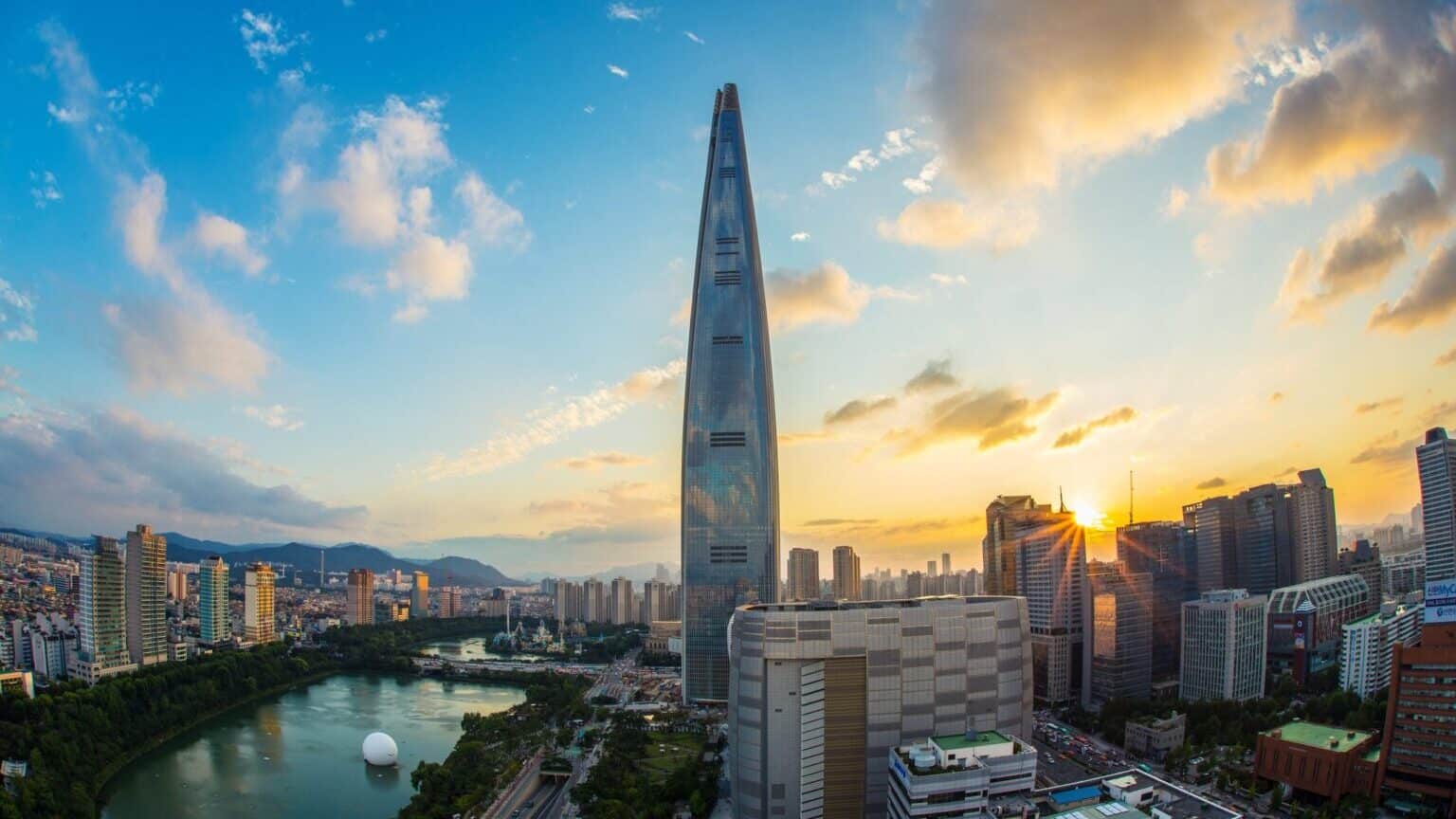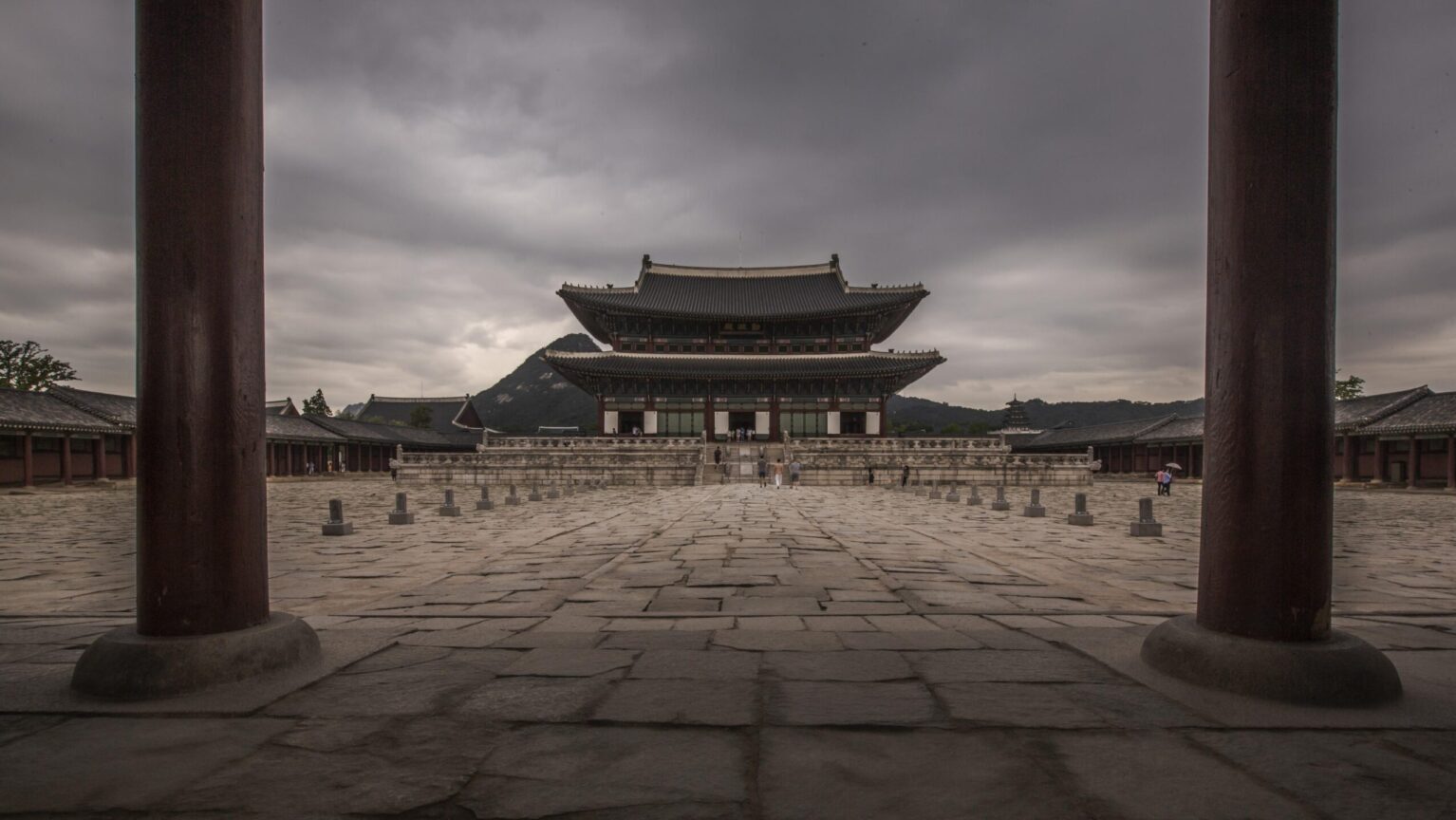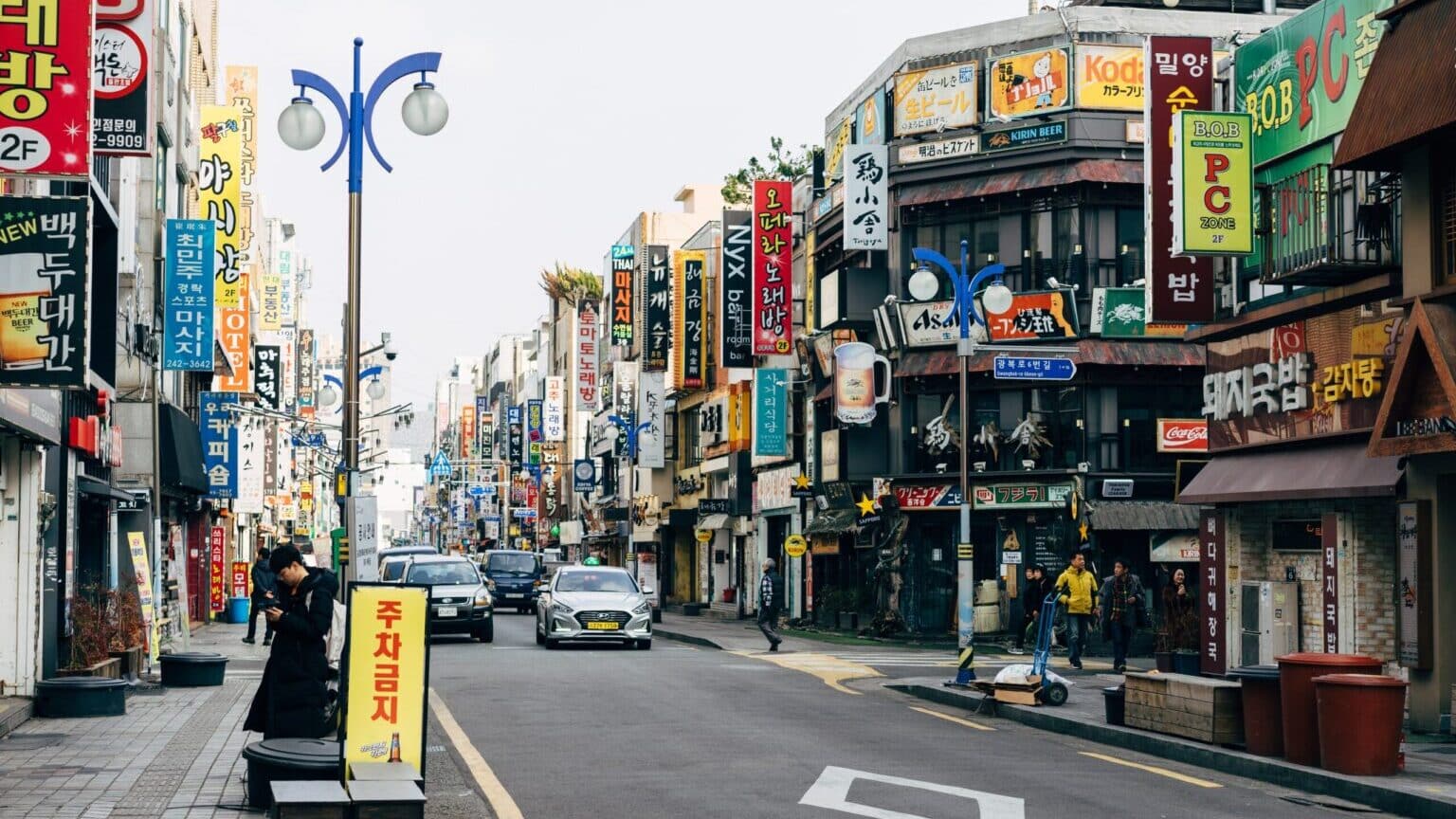Price
 $3039
$3039
Overview
See the highlights of South Korea on this eight-day program, where you will gain a deeper understanding of the country's ancient traditions and modern innovations. The tour begins and ends in Seoul, the vibrant capital city, where you can explore historic palaces and temples, shop at bustling markets, and indulge in the famous Korean BBQ. You will also visit to the ancient city of Gyeongju, the bustling port city of Busan, and the DMZ—the heavily fortified border between North and South Korea—for a glimpse into the country's complicated political situation. Discover the wonders of South Korea, all while earning professional development credit with other educators.
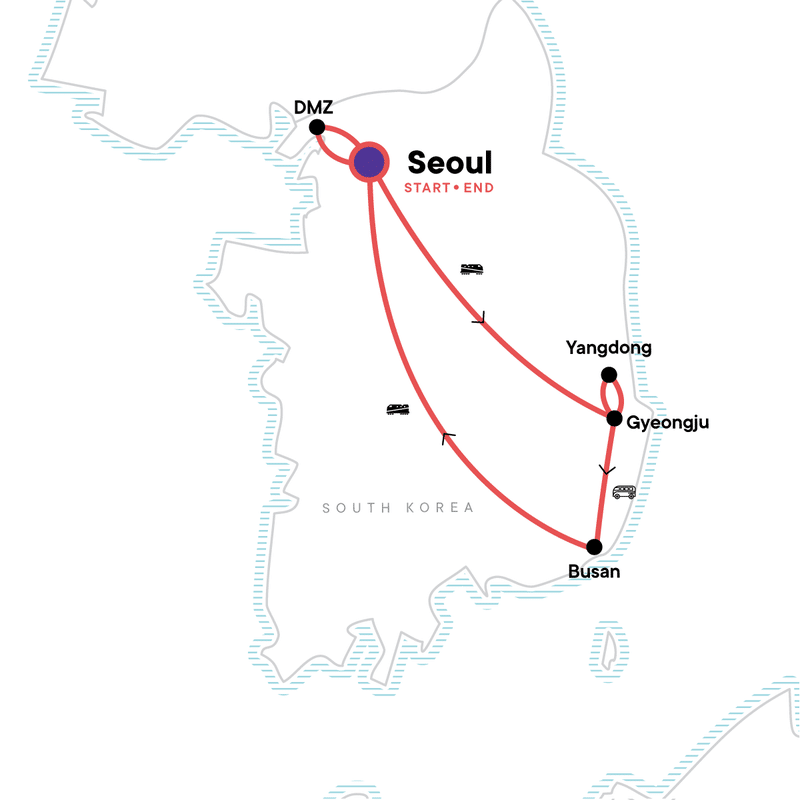
What's Included:
- Seoul city tour
- Gyeongju city tour
- Bulguksa Temple
- Yangdong Folk Village
- Haedong Yonggungsa Temple
- Busan city tour
- Haeundae Beach and Dongbaek Island (APEC House) visit
- N Seoul Tower visit
- Namdaemun Market visit
- DMZ visit
- G Adventures Tour Leader throughout and local guides
- 7 breakfasts, 1 dinner – allow $220-290 USD for meals not included
- Hotels (6 nights), temple (1 night)
- All transport between local destinations and to/from included activities via private vehicle, train, and subway
What's Not Included:
- International air travel
- Incidentals
- Travel health and cancellation insurance
- Applicable visas
- Tips or gratuities
- Airport taxes
- Beverages
- Meals not mentioned in itinerary
- Optional tours and admissions
- Airport transfers
Itinerary Download PDF
You may arrive in Seoul at any time today. The nearest airport is Incheon International Airport (ICN). The city's secondary airport is Gimpo International Airport (GMP). Due to the potential for flight delays or cancellations, we recommend that you consider arriving in Asia at least a day in advance. This will also give you time to adjust to the time difference and overcome any jet lag. We can book extra hotel nights for you in Seoul before and/or after the trip. Hotel Check-in and Welcome Meeting Please note that check-in at the hotel is usually around 2:00-3:00 p.m. There are no planned activities until an intro meeting around 6:00 or 7:00 p.m., usually in the hotel lobby. Check for a sign or ask at the reception desk about the exact time and location of the group meeting. Please make every effort to arrive in time for this meeting. If you are delayed and will arrive late, please inform us. Your tour leader will then leave you a message at the front desk informing you of where and when to meet up tomorrow. After the welcome meeting, join your tour leader for an orientation walk down Cheonggyecheon Stream, a 6.8-mile waterway and public space running through the heart of downtown Seoul. Learn about Seoul while walking past small waterfalls and nearly two dozen overhead bridges. Then explore the dense grid of streets in the bustling neighborhood of Myeongdong, which is packed with people at all hours of the day looking to enjoy some of the best shopping, street food, and nightlife in all of Korea. Opt for a group dinner to get to know your tour leader and travel companions. Joining Instructions By taxi from Incheon International Airport (about 70 mins) Visit the Seoul Taxi stands located outside the arrivals area. All taxis use a meter machine for the fare. - Regular taxis (all colors except black): approximately $50-60 USD (₩65,000-75,000 KRW) – suitable for up to 2 passengers - Premium taxis (black): approximately $85-105 USD (₩95,000-11,000 KRW) – suitable for up to 3 passengers - International taxis: drivers speak English and there is a flat rate of approximately $90 USD (₩120,000 KRW) to your hotel's district - If a group has more than 3 passengers, a jumbo taxi is the best option, at a price comparable to a premium taxi - Please note that there is a night surcharge (120% of the regular fare) between midnight and 04:00 am. By AREX Express Train from Incheon International Airport to Seoul Station (about 1 hour) The non-stop AREX Express Train to Seoul Station is comfortable, clean, and affordable, and the signage and ticket machines will include English. the train runs approximately every 30 minutes from 05:15 until 22:40: - The train to Seoul Station takes 43 mins from Terminal 1 or 51 mins from Terminal 2. - From Seoul Station, you can take a taxi outside the main entrance to your hotel (<10 min). The total price for the train and taxi is about $12-13 USD. - An additional ₩500 KRW deposit is required when purchasing a single-journey transportation card. This deposit can be refunded at the arrival station. By bus from Incheon International Airport The 6001 Airport Limousine Bus (06:55-22:50 every 30 mins) - The journey takes about 90 mins (9 stops) from the airport to the hotel or 10 stops from the hotel to the airport. - The bus fare is approximately $13 USD (₩17,000 KRW). You can purchase tickets at the ticket booth on the arrivals level. - The bus stop near the hotel is at Myeongdong-dong Station near the station entrance – 100 meters (2 mins on foot) from the hotel. Accommodation: Hotel Prince (or similar) * For the actual hotel your specific departure will be using, please check your voucher.
During a private bus tour of Seoul, you will visit Gyeongbokgung Palace, the main royal palace of the Joseon Dynasty built in 1395. The palace has been destroyed many times, but more than half of the original buildings are still standing or are restored. The complex is also home to the National Palace Museum and the National Folk Museum, where you can learn about the history and traditions of the Korean people during the Joseon era. Continue on to Bukchon Hanok Village, where you will be transported back 600 years into Seoul's past. The village boasts the largest cluster of privately owned traditional Korean wooden homes (hanok) in Seoul. Keep an eye out for the half-dozen alleys with beautifully restored architectural features like small courtyards, decorative outer walls, and dark tiled roofs. Explore the narrow and hidden alleys of one of the most memorable places in Seoul, Insadong Alley. Now filled with antique shops, galleries, tea houses, and traditional restaurants, this area once housed the royal studio for painters during the Joseon Dynasty. After exploring the city, opt to see a show, explore a local museum, or hit the pavement and eat your way through street markets trying local fares such as bibimbap, soondae, and kimchi. Accommodation: Hotel Prince (or similar) Meals included: Breakfast
After breakfast, board a high-speed bullet train for a relaxing morning ride through the countryside to Gyeongiu. The city was the capital of the ancient kingdom of Silla, which ruled about two-thirds of the Korean Peninsula at its height, for close to one thousand years. Several of Gyeongiu's historical buildings are designated as UNESCO World Heritage Sites. You will experience an overnight stay in a local temple, which starts with a steep climb uphill. The group will learn about temple etiquette, watch a monk's martial arts performance (sunmudo), experience the daily prayer ritual (108 prostrations), and enjoy a temple-style dinner (sitting on the floor). Stay in rooms called ondol, which are traditional yet heated to be cozy and comfortable, with beds made up directly on the floor. The rooms are multi-share, divided up between males and females. Please be aware that you will spend a fair amount of time sitting cross-legged on floor mats at the temple. Approximate travel time: 2 hrs by bullet train Accommodation: Golgulsa Templestay (or similar) Meals included: Breakfast | Dinner
Enjoy a peaceful morning at Golgulsa Temple, located amid the natural beauty of Hamwolsan Mountain. Take an easy hike up to the only stove cave temple in Korea for a morning meditation. During a tour of Gyeongju, visit the UNESCO World Heritage Site of Bulguksa Temple, a head temple of the Jogye Order of Korean Buddhism located on the slopes of Mount Toham. Admire the temple's six national treasures: the Dabotap and Seokgatap stone pagodas, Yeonhwagyo and Chilbogyo bridges, Cheongungyo and Baegungyo bridges, and two gilt-bronze statues of Buddha. Also visit the oldest surviving astronomical observatory in Asia, Cheomseongdae Observatory. Cheomseongdae may not appear to be a monumental landmark, but the observatory tower dates back to the seventh century and is actually the oldest existing astronomical observatory in all of East Asia. Cheomseongdae was used for observing the stars in order to forecast the weather in the ancient scientific hub of Gyeongju. Later in the tour, visit the Daereungwon Tomb complex, another UNESCO World Heritage Site that contains 23 tombs located inside large mounds. The complex is beautiful with its rolling mounds and gardens, and you can pay a visit inside the tombs, the most famous of which are Cheonmachong and Hwangnam Daechong. Each tomb holds thousands of relics that provide a window into the Silla Dynasty and its royal family. The contents of the tombs are over 1,500 years old and a testament to the rich history and cultural heritage of Korea. Accommodation: Swiss Rosen Hotel - Gyeongju (or similar) Meals included: Breakfast
Today, you will travel by private bus to colorful Busan. Along the way, enjoy a visit to Yangdong Folk Village, a 500-year-old UNESCO World Heritage Site located in Gyeongju National Park, where you can get a feel for life during the early Joseon Dynasty. Founded in the early 1400s, the village boasts well-preserved buildings and has more than 160 homes displaying traditional Joseon architecture within a gorgeous natural setting. Continue on to the picturesque 14th-century seaside temple, Haedong Yonggungsa, originally known as Bomun Temple. Originally built in 1376, this picturesque, cliffside Buddhist temple overlooks the East China Sea. After exploring the temple, check in to your hotel and get your bearings with an orientation walk on Haeundae Beach and Dongbaekseom. Opt to spend the evening treating yourself at a Jjimjilbang spa, or sing your heart out at a popular karaoke bar. Approximate travel time: 2 hrs by private vehicle Accommodation: Felix Hotel by STX (or similar) Meals included: Breakfast
Tour Busan and visit Jagalchi Fish Market, a major attraction at Nampo Port. Wander through the rows of stalls selling everything you can dream of from the sea. Watch as locals haggle for the best price and fishmongers hawk their wares. Then check out Gukjesijang, or Gukje Market, near Biff Square, a well-known modern movie district. The market was once a place for refugees to earn a living during the Korean War. It is now a bustling international market full of food, home goods, clothes, souvenirs, and more. The city tour will also take you to Yongdusan Park, home to more than 70 different types of trees and the 387-ft-high Busan Tower. Then explore the pastel-colored village of Gamcheon, nestled in the side of a mountain, with uniquely painted houses, murals, cafes, and shops. After touring Busan, travel by bullet train back to Seoul, where you will visit Namdaemun Market, Korea's oldest traditional market, dating back to 1414. It is also the country's largest market, with over 10,000 vendors spanning several city blocks. Get ready to shop! Then take a cable car up to the most iconic landmark in Seoul, N Seoul Tower, located at the top of Mt Namsan. The tower used to be a broadcasting station and is now a beautiful observatory open to the public. Opt to pay an additional fee to go up the tower to the observatory. During the evening, spend some free time visiting Banpo Bridge, home to the Moonlight Rainbow Fountain Show, and three artificial islands (Sebitseom) located near one end of the bridge. Or hang out in the Gangnam district, an historically rich, fast-developing neighborhood with plenty to do and see. Gangnam Station is the busiest subway station in Seoul and has a huge underground shopping center, or you could visit Bongeunsa, a Buddhist temple in the center of Gangnam. Approximate travel time: 2.5 hrs by bullet train Accommodation: Hotel Prince (or similar) Meals included: Breakfast
Visit the Demilitarized Zone (DMZ), in place since 1953 to separate North and South Korea. It is the most heavily militarized border in the world, with over a million soldiers standing guard every day at one of the last remnants of the Cold War era. The 160-mile long and 2.5-mile wide buffer zone has had very little development, and nature and wildlife have taken over the area. After spending about 3-4 hours visiting the DMZ, the group will visit The War Memorial of Korea, with indoor and outdoor exhibits containing about 9,000 artifacts. The memorial building serves to exhibit and memorialize the military history of Korea and preserve materials related to the Korean War. Later, return back to Seoul for another night in the city. Opt to visit the Samsung Leeum Contemporary Gallery, explore the Itaewon neighborhood, or pre-book a kimchi making and hanbok experience. Approximate travel time: 2-3 hrs by private vehicle (Seoul to DMZ round trip) Accommodation: Hotel Prince (or similar) Meals included: Breakfast
There are no planned activities today, so you may depart Seoul at any time. The nearest airport is Incheon International Airport (ICN). The city's secondary airport is Gimpo International Airport (GMP). If you wish to extend your stay in Seoul, consider booking post-tour accommodation with us. Please note that check-out time from the hotel is usually mid-morning, but luggage storage services are available at the reception desk. Want more adventure? Book two or more GEEO programs in the same school year and receive a discount! GEEO will give you 10% off the lesser-value program(s) (up to three programs per year). If you would like to extend your time abroad but don't see another GEEO program that interests you, let us know. We can help you find a trip from our partner tour's much larger catalog. Their tours are open to the general public and not designed specifically for educators, but we can still offer you and your travel companions a discounted educator price on any of their tours, and you would still receive GEEO's fast and attentive customer service. Meals included: Breakfast
*Itinerary Disclaimer: While it is our intention to adhere to the routes described on our website, there is a certain amount of flexibility built into the itinerary and on occasion it may be necessary, or desirable, to make alterations. The itinerary is brief, as we never know exactly where our journey will take us. Due to our style of travel and the regions we visit, travel can be unpredictable. The information on our website is a general guide to the tour and region, and any mention of specific destinations or wildlife is by no means a guarantee that they will be visited or encountered. Additionally, any travel times listed are approximations only and subject to vary due to local circumstances.
Details
Frequently Asked Questions
Please read our general FAQs, where you can find essential information that applies to all of our programs.Resources to Learn & Teach about South Korea
Visit our recommended reading page to see the list of books GEEO recommends reading before your program (this is not required reading). We also have lesson plans and Pinterest boards that may be useful for you as you learn about your destination and prepare to bring lessons back to your classroom.Terms and Conditions
It is very important to review our Terms and Conditions before signing up for a GEEO program.GEEO Program Confirmation Process
We require a minimum of 6 participants for most GEEO programs. We officially confirm that a program will run once at least 8 people have signed up, which provides a margin for individual cancellations. Nearly all GEEO programs ultimately meet this enrollment quota, and in the rare event that a program does not meet the minimum requirement and GEEO cancels the program, we will work with you to find a suitable alternative or provide a refund of your deposit if you prefer. We encourage you to sign up for any program that interests you, and we will notify the entire group once 6 people are booked and again once 8 people are booked. We always emphasize the importance of exercising caution when making non-refundable travel arrangements, especially given the unpredictable nature of travel. For example, we typically recommend booking flights with flexible change/cancellation policies.Cancellation Policy
All cancellations must be submitted to GEEO in writing by emailing your request for cancellation to travel@geeo.org. If you do not receive a confirmation that we have received your cancellation request, please call us at 1-877-600-0105.- If you cancel 60 days or more prior to the start of your program, all your program fee payments will be refunded excluding your $350 deposit, which is kept on file for future use and never expires. (Exception for participants who receive grants from our university partners: To address disruption caused by cancellation from grant recipients, deposits paid by grant recipients are forfeited upon cancellation.)
- If you cancel between 30 and 59 days prior to the start of your program, you will receive a 50% refund and your deposit will be kept on file for future use and will never expire.
- If you cancel within 30 days prior to the start of your program, you will receive no refund, but your deposit will be kept on file for future use and will never expire.
Trip Notes & Expectations
Before you decide to travel with GEEO, it is important that you read all of the information about the program contained on this page. Our programs are quite adventurous, and we find that clients who read the trip details in full are happier with their experiences.- ACCOMMODATION: The purpose of the accommodation is to provide a safe, well-located place for you to sleep. We use simple hotels to keep these trips as inexpensive as possible.
- LUGGAGE: It is essential to pack lightly for this trip, as you will be walking with your luggage in busy public train stations to catch connecting trains. You must be careful to travel light and use luggage that you can handle easily. You will need to be capable of walking up and down stairs with your luggage without assistance. A large bag will be an inconvenience to you and will slow you down. Please also be aware that properties we stay in with only two stories may not have elevators installed and climbing the stairs with your luggage will be necessary. You can leave your larger suitcase in Seoul if you wish and take a smaller bag for when you head down south. It will be locked up at our start/end hotel.
- ACTIVITY LEVEL & PACE: This is a fairly active trip. Please be prepared for steps/stairs (while handling luggage) and hills. You will also spend time sitting cross-legged on floor mats during the temple stay. We recommend always carrying snacks with you. Meals can sometimes be far apart.
- GROUP LEADER: Please make sure you understand the role of your tour leader on this trip. All GEEO/G Adventures group trips are accompanied by one of G Adventure's group leaders, which they refer to as Chief Experience Officers (CEO). The aim of the group leader is to take the hassle out of your travels and to help you have the best trip possible. They will provide information on the places you are traveling through, offer suggestions for things to do and see, recommend great local eating venues, and introduce you to our local friends. Our itineraries often have plenty of free time to explore on your own. While not being guides in the traditional sense, you can expect them to have a broad general knowledge of the countries visited on the trip, including historical, cultural, religious, and social aspects. We also use local guides where we think more specific knowledge will add to the enjoyment of the places we are visiting – we think it’s the best of both worlds.
Single Travelers
Half of GEEO’s participants travel by themselves, so please don’t worry if you do not have a travel companion for your trip. Our program fee is for one traveler in double-occupancy accommodation, and GEEO can find you a roommate of the same gender if you do not have a travel companion. Most of our programs have a “My Own Room” option, also known as a “Single Supplement,” which is an extra fee that you can pay to have a room to yourself. You will only incur an additional charge if you specifically request a single room. To see the price for the “My Own Room” option, please find your program on our extra services page. If you want to room alone, please email travel@geeo.org to request a single room.Emergency Contacts
Should you need to contact G Adventures during a situation of dire need, it is best to first call their local G Adventures office. If for any reason you do not receive an immediate answer, please leave a detailed message and contact information so they may return your call and assist you as soon as possible. EMERGENCY CONTACT NUMBERS G Adventures Local Office Primary contact: Derek Jeon +82-10-8759-9367 Secondary contact: Tommy Na +82-10-5514-5041 If you are unable for any reason to contact the local office, please call the numbers listed below, which will connect you directly with the 24-hour Sales team, who will happily assist you. Toll-free, North America only: 1 888 800 4100 Calls from UK: 0344 272 0000 Calls from Germany: 0800 365 1000 Calls from Australia: 1300 796 618 Calls from New Zealand: 0800 333 307 Outside North America, Australia, New Zealand, Germany and the UK: +1 416 260 0999Packing List
Please read this article on GEEO’s blog for our staff’s suggestions on the best gear to pack for your upcoming travels. You must be prepared to carry your own bags and be comfortable carrying them up and down stairs, on and off transportation, and to hotels. As a rule, we try not to have to walk more than 15-20 minutes with your bags, which is why we recommend keeping the weight of your bags between 22-30 lb. Most travelers carry a backpack or rolling bag of small to medium size. No XXL bags please! A daypack is also essential for carrying everyday items. Space is limited on transportation, so there is a limit of one main piece of luggage per person plus a daypack per person. Suggested Checklist- Shawl or scarf (for temple visits)
- Rainjacket and/or umbrella
- Personal clothing for comfortable weather – we recommend packing 7-8 days of outfits so you don’t have to do laundry
- Light fleece (for flight over)
- Comfortable waterproof walking shoes
- Daypack
- Sunblock
- Sunglasses
- Sun hat
- Small towel and swimwear
- Watch or alarm clock (or use your phone)
- Toiletries
- Camera (or use your phone)
- First-aid kit, including: lip salve, aspirin, bandaids, anti-histamine, Dramamine, Imodium or similar tablets for mild cases of diarrhea, electrolyte powder, insect repellent, extra prescription drugs you may be taking
- Travel pillow
- Money belt
- Water bottle
- Phone/tablet for internet – most hotels have WiFi
- Chargers for electronics as well as converters/adapters, if needed
- AirTags or Tile trackers
- Packing cubes
- Flip-flops/sandals
- Earplugs
- Snacks – packing a few granola bars is a good idea; you can buy snacks when you get there too, so don’t go crazy here
- Ziplock bags for wet clothing
- Reading/writing material
- Hand sanitizer/baby wipes
- Passport (with photocopies)
- Travel insurance (with photocopies)
- Airline tickets (with photocopies)
- EUR/USD cash
- Credit or debit card (see personal spending money)
- G Adventures vouchers, pre-departure information, and dossier
- Any entry visas or vaccination certificates required
- GEEO Classroom action plans for your group – this is sent 10-30 days before departure
Laundry
Laundry facilities are offered by some of our hotels for a charge. You can also use a local laundromat, if necessary. We recommend packing enough clothes so you don't have to do laundry.Passports and Visas
All GEEO programs require the participant to have a valid passport. Please see our general FAQ for information on obtaining a passport. As with all of our trips, we try to provide the most accurate information we can, but governments sometimes change visa rules. It is your responsibility to double check the information we provide below by searching here. U.S. citizens do not need a visa to travel to South Korea. Non-American participants should check with their government or the nearest Korean embassy to find out if they need a visa.Money Exchange
The local currency in South Korea is the won (₩ KRW). As currency exchange rates fluctuate, we ask that you refer to the following website for daily exchange rates: www.xe.com. We recommend that you obtain cash from ATMs while traveling; they will dispense the local currency. We do, however, recommend that you bring at least $200 USD in cash for emergency use or in case you have trouble with the ATMs. Major credit cards are accepted in most shops, but you may be charged an international transaction fee; ask your financial institution about their international fees. Please note that if you are carrying U.S. dollars, the bills should be in good condition (i.e., not torn, wrinkled, or marked on in any way) and dated recently.Tipping
Tipping is not practiced in South Korea. Leaving money at restaurants, in taxis, etc. will simply cause confusion! However, at the end of each trip, if you felt your G Adventures tour leader did an outstanding job, a tip would be appreciated. The amount is entirely your personal preference, but as a guideline, $35-45 USD per person would be appropriate.Vaccinations
GEEO cannot provide any medical advice, so it is very important to consult your doctor or a travel clinic about which vaccinations you will need for your trip. We recommend contacting Passport Health (http://www.passporthealthusa.com/), which has travel clinics located throughout the United States. You can also check the CDC's recommended vaccinations for your destination. Please take this seriously!Flights
We find the best prices for flights are often available around 90-120 days before departure, but of course this varies greatly from route to route and year to year. You should wait until this trip is confirmed before you book non-refundable flights. GEEO and G Adventures bear no responsibility for any flights purchased before the trip is confirmed. This program begins and ends in Seoul. Please double-check our itinerary for the date by which you must arrive in Seoul. You may want to arrive in Seoul one or more days early in case you have flight disruptions. You can arrive at any time you choose, but try to make it in time for our 6:00 p.m. Welcome Meeting on Day 1. You can depart from Tokyo any time on the final day of the program, or stay later to see more of the city.Plugs and Converters
There are two components to provide external power to your device: adapters and transformers (also called electrical converters). The adapter is for your device's plug, adapting the prongs on a standard U.S. two- to three-pronged power cord to fit the local outlets. The transformer/converter changes the local voltage to the voltage used in the U.S. South Korea uses a Type F plug with two circular prongs; any European-style plug (e.g., Type C and Type E) will also work. The voltage used in South Korea is 220V. (Standard U.S. electrical outlets are 120V.) Most new devices, including phones and laptops, are made to work with the different voltage rates, but some devices, like hair dryers, may only work on the U.S. standard of 120V. Check your device's plug or manual to see what voltage range it requires. Most transformer blocks will have an “Input” line that defines its voltage capacity; for example, “Input: 100-240V” means that it will work with voltages between 100V to 240V. If your device can’t handle the higher voltage, you’ll need to purchase a transformer/converter. You can find world transformers/converters online or at many retail stores in the travel section.Weather
South Korea has warm and humid weather in mid-June, as it is the early part of the summer season. The temperatures usually range from the mid-60s to the low-80s. The humidity starts to rise, and occasional rainfall is common as the country approaches the monsoon season. Expect warm days with a mix of sunshine and clouds.Costs
- Tour Company Fee: See our price in the top right corner
- Optional Activities: $0-150 USD
- International Airfare from the United States: Roughly $1,000-1,500 USD If you require assistance searching for international flights, we would be happy to help you.
- Airport Transfers: $20-100
- Insurance: $79-200 USD Please note: It is mandatory for all of our travelers to have Emergency Medical insurance that covers both emergency evacuation and repatriation to the sum of $200,000 USD. We also strongly recommend purchasing cancellation insurance as an add-on.
- Tipping: We recommend $35-45 USD for your G Adventures tour leader.
- Meals Not Listed in the Itinerary: $220-290 USD
- Laundry, Drinks, Phone Calls, etc.: Make sure you budget for these types of expenses
- Souvenirs: Variable. At your personal discretion.
- Vaccines: Variable. Please consult with your primary care provider.
- Non-Educator Donation: $100 USD (suggested donation) This is only for non-educator guests traveling with an educator on a GEEO trip. Educators and retired educators should not make this donation.

